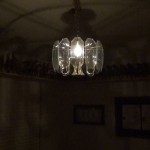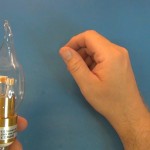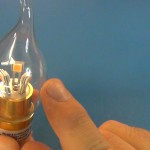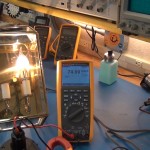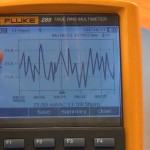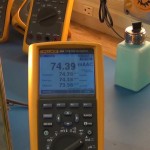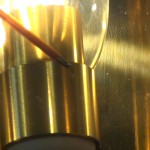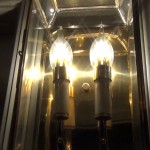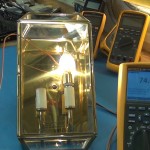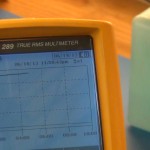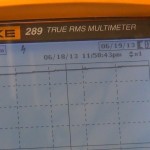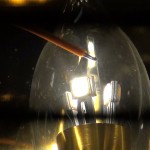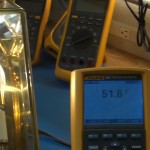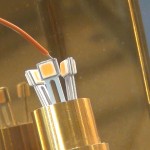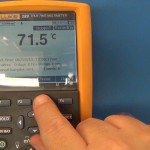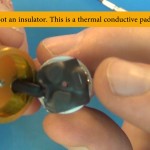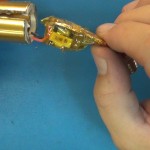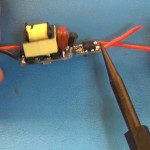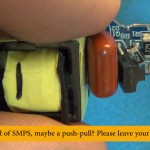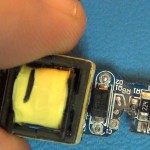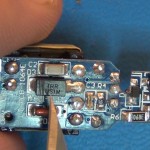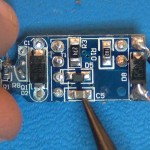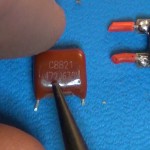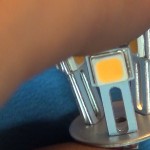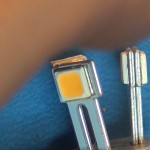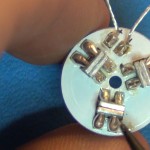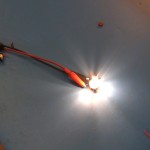I was a pebble watch Kickstarter backer and had picked orange. They just recently started shipping the orange models.
I thought I was running Android v2.4 but that is my software number not my OS version. My phone lists the firmware version as the Android OS version which reports as v2.1 and I would need OS v2.3 or higher to work with the pebble.
I will be getting a new phone in a month or so and it should work just fine then, my fail!
This is an old trick to save batteries from draining when you don’t have an on/off switch and don’t want to take out your batteries between usages.
Plus I take a few current measurements to show the current usage is ~200uA when not used for charging. This stand-by current is just to power the circuit when not being used.
An on/off switch would have prevented this ~200uA stand-by current but would have complicated the build and increased the product price. So slipping in a bit of paper between two batteries or an end connector does just the same as a switch. This trick brings the stand-by current to 0A and the batteries are good even a year later instead of being dead.
Yes, taking the batteries out works and is better but is more difficult and you have to find your batteries when you need to use your MintyBoost.
<Video>
Video: Product Review
Video: Testing & Teardown
Links:
Product website CandelabraBulb.com or just search Amazon for Sexy LEDs
Another great YouTube channel that reviews LED blubs is ElectronUpdate’s YouTube channel
Features:
Candelabra bulb style in E12 sockets
4 Watt LED with 50 Watt equivalent light output 400 Lumens
Style is flame or round tip
Comes in gold or silver base
Dimmable
Life span is 12 years at 6.8hrs/day or 30,000 hours.
80% more efficient then incandescent
Soft, warm white light (2700 k)
Hidden heat sink
Return on Investment:
5 watt x 6 hours per day usage x 365 days = 10.95 kWh.
At 12 cents per kWh it will cost $1.32 a year to operate.
Subtract that from the $10.50 cost to run a 40 watt bulb saves you $9 per yr.
I have 16 bulbs so I will save $144 per year.
The current cost for 16 bulbs is ~$416 so I would get 100% ROI in 2.8 years.
Photo Gallery
CLICK PHOTO for gallery view and click a SECOND time for hi-resolution image. Click thumbnails on lower right and lower left of gallery to navigate gallery photos.
- Sexy LED for review and teardown
- One Sexy LED full on
- One Sexy LED dimmed to lowest setting
- Marking on packaging
- Current test
- 1 minute trend on current shows 74 mA
- Zoom in on current trend to see small ripple.
- Current average was 74 mA
- 120V x 0.074A give 8.76 watts. Higher than advertised 5 watts!
- K type temperature probe on metal heat sync to read operating temperature.
- Used in my hall for 3 months. Look very nice!
- Probing operating temperature.
- operating temperature trend started
- operating temperature trend finished.
- K type temperature probe set to read operating temperature of glass bulb
- operating temperature of glass bulb is 51.6C
- Close up of the six LEDs once glass is removed.
- Setup to read operating temperature of LED substrate
- operating temperature of LED substrate was 71.5C after 10 minutes.
- operating temperature of LED substrate trend plot.
- Thermal conductive pad between LED substrate metal and metal heat sync.
- Removing the electronics package
- Some kind of SMPS circuit
- power circuit
- power circuit with large cap and transistor removed
- power circuit
- power circuit
- power circuit
- Large Cap
- Transformer
- LEDs See datasheet for LEMWH51W80MZ30_5152
- LEDs See datasheet for LEMWH51W80MZ30_5152
- LED substrate
- LED substrate
- LED top view
- Testing just LEDs using bench power supply
- Testing just LEDs using bench power supply. Ran at 18A 300 mA but normal light output was 15V 40 mA
- Thanks for joining!



